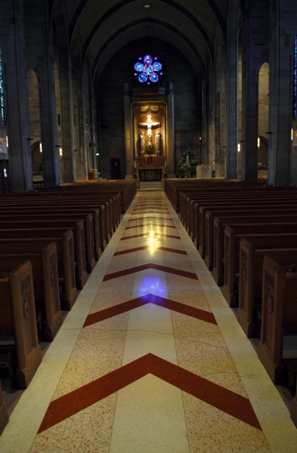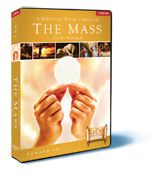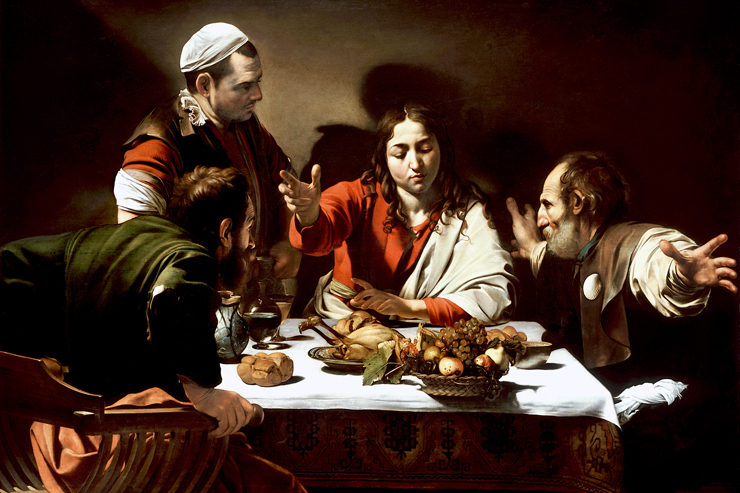A Biblical Walk Through the Mass — Your Moment in the Mass: “And with your spirit”

Photography © by Andy Coan
A continuing series on the Scriptural roots and inspiration of the Holy Mass by Dr. Edward Sri
Catholics are very familiar with the parts of the Mass — perhaps too familiar. Sunday after Sunday, we recite certain words such as, “Amen…Thanks be to God…Alleluia…Holy, Holy, Holy Lord….” These words are so ingrained in us that we often say them, almost robotically, out of routine. Indeed, if someone poked us in the middle of the night and said, “The Lord be with you,” many of us probably would roll over and instinctively respond, “And also with you.”
But do we really grasp the meaning of these words? Do we understand the significance of what we are doing and saying in the liturgy?
The new English translation of the Mass, which will be promulgated this November 27, will provide a unique opportunity for Catholics to reflect on the meaning of the prayers in the liturgy. This updated translation will bring about the most significant change in the way most English-speaking Catholics participate in the Mass since the years following the Second Vatican Council (1962–1965), when the liturgical texts were translated into English and officially used in worship for the first time. The basic structure of the prayers will remain the same, but the change in wording at many points throughout the liturgy will be quite noticeable. For a time, most Catholics will no longer be able to walk into church on Sunday and automatically recite the Gloria, the Creed, and other Mass parts by memory. They will need a guide to help them become accustomed to the new translation of these prayers.
As we are taken out of our routine, we will have the opportunity to ponder the significance of all that we say and do in the liturgy and re-discover the splendor of the Mass.
The Lord be with you… and with your spirit.
For example, consider the meaning behind one of the most noticeable changes found near the opening of Mass. It involves the people’s response to the priest’s greeting, “The Lord be with you.” In the new translation, we will reply, “And with your spirit.” This more adequately reflects the Latin text of the Mass and the biblical language of St. Paul (see Galatians 6:18; Philippians 4:23; 2 Timothy 4:22).
It also more fully expresses an important theological point. When we said, “And also with you” in the older translation, one might get the impression that our response was merely intended to express an exchange of personal greetings or reciprocal good will: “May the Lord be with you, too, Father.”
 But there is much more to this response. When a man is ordained a priest, the Holy Spirit comes upon him in a unique way, enabling him to perform the sacred rites of the Mass and consecrate the Eucharist. By responding, “And with your spirit,” we acknowledge the Spirit’s activity through the priest during the sacred liturgy. We are referring to the ‘spirit’ of the priest, the very core of his being, where he has been ordained to offer the sacrifice of the Mass. Indeed, we are acknowledging that while God works through the priest who is offering the Mass, ultimately it is Jesus Christ who is the head of the community gathered for the liturgy and it is his Spirit who is the primary actor in the liturgy, regardless who the particular priest celebrating Mass may be.
But there is much more to this response. When a man is ordained a priest, the Holy Spirit comes upon him in a unique way, enabling him to perform the sacred rites of the Mass and consecrate the Eucharist. By responding, “And with your spirit,” we acknowledge the Spirit’s activity through the priest during the sacred liturgy. We are referring to the ‘spirit’ of the priest, the very core of his being, where he has been ordained to offer the sacrifice of the Mass. Indeed, we are acknowledging that while God works through the priest who is offering the Mass, ultimately it is Jesus Christ who is the head of the community gathered for the liturgy and it is his Spirit who is the primary actor in the liturgy, regardless who the particular priest celebrating Mass may be.
Dr. Edward Sri is provost and professor of theology at the Augustine Institute in Denver. This reflection is based on his new book, A Biblical Walk Through the Mass: Understanding What We Say and Do in the Liturgy (Ascension Press).
Please help us in our mission to assist readers to integrate their Catholic faith, family and work. Tell your family and friends about this article using both the Recommend and Share buttons below and via email. We value your comments and encourage you to leave your thoughts below. Thank you! – The Editors












